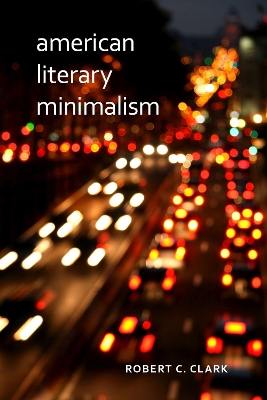Although a handful of books and articles have been written about American literary minimalism during the last forty years, the mode remains misunderstood. When in a 2011 interview in The Paris Review author Anne Beattie was asked how she felt about being "classed as a minimalist," she began her answer: "none of us have ever known what that means." Her response brings into focus the lack of agreement or clarity about the sources and definitions of literary minimalism. Robert C. Clark's American Literary Minimalism fills this significant gap.
Clark demonstrates that, despite assertions by many scholars to the contrary, the movement originated in the aesthetic programs of the imagists and literary impressionists active at the turn of the twentieth century. The genre reflects the philosophy that "form is thought," and that style alone dictates whether a poem, story, or novel falls within the parameters of the tradition. The characteristics of minimalist fiction are efficiency, frequent use of allusion, and implication through omission.
Organizing his analysis both chronologically and according to lines of influence, Clark offers a definition of the mode, describes its early stages, and then explores six works that reflect its core characteristics: Ernest Hemingway's In Our Time; Raymond Carver's Cathedral; Jay McInerney's Bright Lights, Big City; Susan Minot's Monkeys; Sandra Cisneros's Caramelo; and Cormac McCarthy's The Road. In his conclusion, Clark discusses the ongoing evolution of the category.
- ISBN13 9780817318277
- Publish Date 31 January 2015
- Publish Status Active
- Publish Country US
- Imprint The University of Alabama Press
- Format Hardcover
- Pages 200
- Language English
